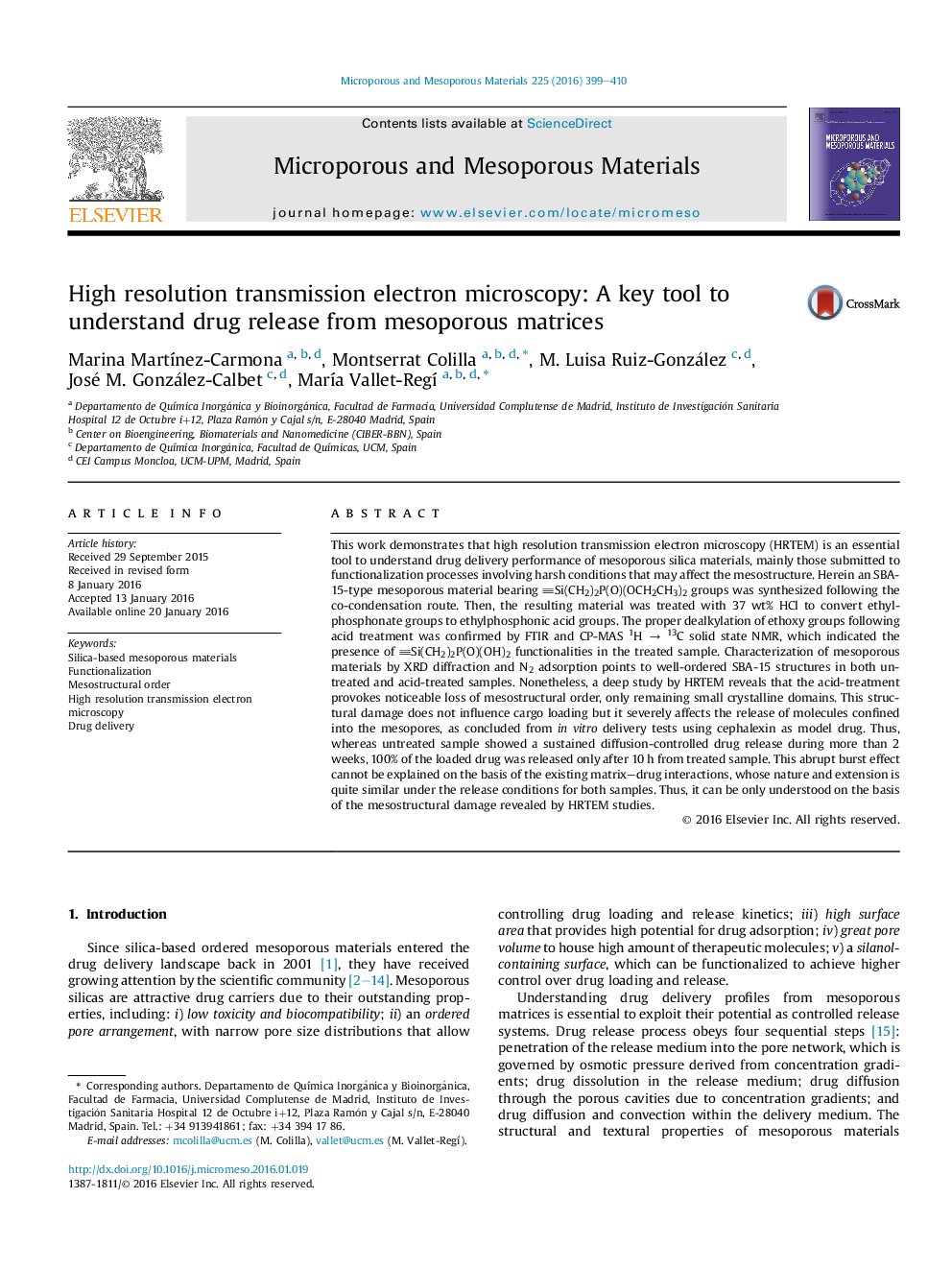| کد مقاله | کد نشریه | سال انتشار | مقاله انگلیسی | نسخه تمام متن |
|---|---|---|---|---|
| 72105 | 49011 | 2016 | 12 صفحه PDF | دانلود رایگان |
• Treating SBA15DPT with 12M HCl produces –PO3H2 groups but damages the mesostructure.
• HCl-SBA15DPT presents uncontrolled drug burst release compared with SBA15DPT.
• XRD and N2 adsorption are not enough to detect mesostructural damages in HCl-SBA15DPT.
• HRTEM is essential to understand drug release from mesoporous materials.
This work demonstrates that high resolution transmission electron microscopy (HRTEM) is an essential tool to understand drug delivery performance of mesoporous silica materials, mainly those submitted to functionalization processes involving harsh conditions that may affect the mesostructure. Herein an SBA-15-type mesoporous material bearing Si(CH2)2P(O)(OCH2CH3)2 groups was synthesized following the co-condensation route. Then, the resulting material was treated with 37 wt% HCl to convert ethylphosphonate groups to ethylphosphonic acid groups. The proper dealkylation of ethoxy groups following acid treatment was confirmed by FTIR and CP-MAS 1H → 13C solid state NMR, which indicated the presence of Si(CH2)2P(O)(OH)2 functionalities in the treated sample. Characterization of mesoporous materials by XRD diffraction and N2 adsorption points to well-ordered SBA-15 structures in both untreated and acid-treated samples. Nonetheless, a deep study by HRTEM reveals that the acid-treatment provokes noticeable loss of mesostructural order, only remaining small crystalline domains. This structural damage does not influence cargo loading but it severely affects the release of molecules confined into the mesopores, as concluded from in vitro delivery tests using cephalexin as model drug. Thus, whereas untreated sample showed a sustained diffusion-controlled drug release during more than 2 weeks, 100% of the loaded drug was released only after 10 h from treated sample. This abrupt burst effect cannot be explained on the basis of the existing matrix–drug interactions, whose nature and extension is quite similar under the release conditions for both samples. Thus, it can be only understood on the basis of the mesostructural damage revealed by HRTEM studies.
Figure optionsDownload as PowerPoint slide
Journal: Microporous and Mesoporous Materials - Volume 225, 1 May 2016, Pages 399–410
